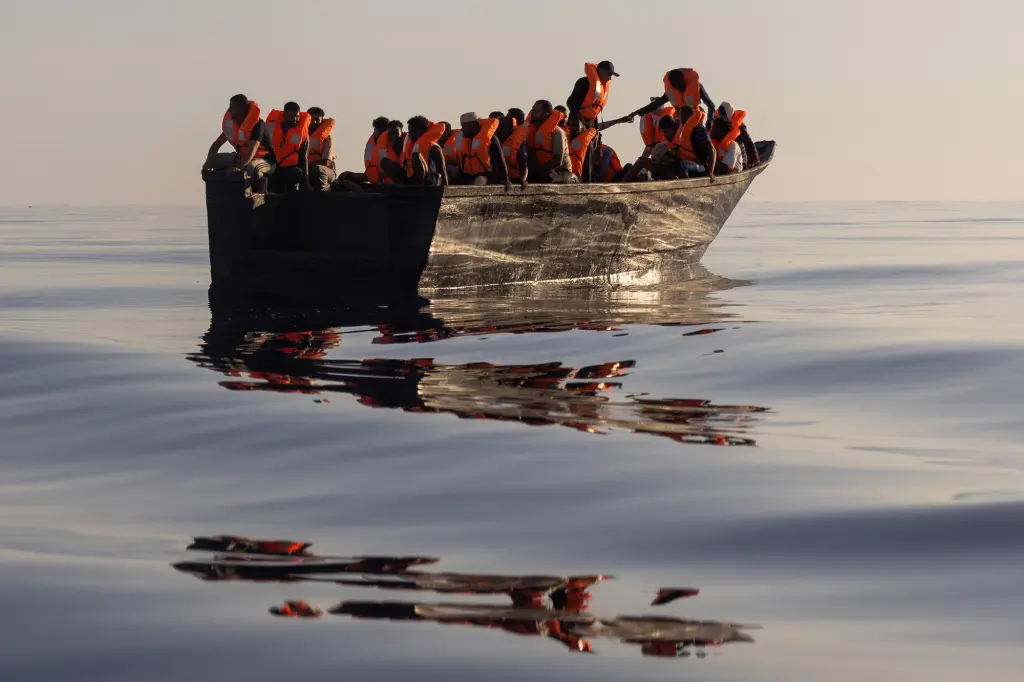By: Karen Zhu
No Choice
Thaer Khalid al-Rahal was one of the 750 migrants that boarded the boat. His 4-year-old son, Khalid, had leukemia, and the doctors had said that he needed a bone marrow transplant. Because UNHCR wouldn’t cover his child’s treatment, Thaer went to Europe to earn money. We reached out to his cousin, Abdulrahman Yousif al-Rahal, who lives in a Jordanian refugee camp of Zaatari, “Thaer thought he didn’t have a choice,” he had said on the phone. The story is similar for 27-year-old Mohamed Abdelnasser in Egypt, who realized that the paltry profit he got from his carpentry business was far from enough for supporting himself, his wife, and their two sons.
Different Story, Similar Cause
In contrast, Matloob Hussain, age 42, has a different story, but still, a fairly similar reason. It started as his Greek residency renewal was denied by the government and was sent back to Pakistan, where he was born. His brother Adiil Hussain was interviewed in Greece where they had lived together, “Europe doesn’t understand,” he had said, “We don’t leave because we want to. There is simply nothing for us in Pakistan.” Back home, his salary couldn’t support his twenty extended family members and their needs. He was in an economic crisis. Matloob had been to Europe before, but he had been so scared of the sea, he had not opened his eyes once. This time the smugglers promised to take him to Italy and said they would use “a good boat.”
Gone Forever
As Thaer, Mohamed, and Matloob boarded the blue trawler, they all knew there was a risk, but still thought that they had no choice. Some of the people on the trawler were fleeing war. Many were family breadwinners, risking their own lives to earn money for others back home. Some were even children. The trawler departed Libya on June 8. Only 104 of the 750 passengers reached the Greek mainland alive. Eighty-two bodies had been found and recovered, and countless others swallowed by the waves, gone forever. Almost half the passengers were believed to have been from Pakistan. The country’s interior minister Rana Sanaullah Khan said on Friday that an estimated 350 Pakistanis were on board, and that many may have died. Of the survivors from the boat, forty-seven are Syrian, forty-three Egyptian, twelve Pakistani and two Palestinian.
Endless Wait
News of the capsized trawler was released on June 14; the report had said that at least 17 people had drowned while noting that more than 100 had been saved. On the Greek mainland, relatives of passengers waited anxiously for updates in the scorching sun outside migrant reception centers. Back in hometowns and villages, people kept their cell phones plugged into the power sockets anxious not to miss any calls, their hopes rising, then ceasing, with every time a call came in. Adiil came looking for his brother. He was turned away but left his details anyway. Several Pakistani survivors seemed to know Matloob as “the man in the yellow T-shirt,” but no one had seen him since the wreck. Now Adiil didn’t know what to do with himself. His eyes were bloodshot from crying. He carried creased photographs of his brother. In one image, Matloob is standing alongside his 10-year-old daughter Arfa. Adiil had told her that her father was in the hospital, but the lie was weighing more on him by the day as she kept asking why they couldn’t speak. Khalid had been asking for his father, too, but no one knew how to make a 4-year-old understand something they barely understood themselves. Relatives said that Nermin, Khalid’s mother, was “in bad shape.” She had a funeral to organize without a body. But first she had to take Khalid to the hospital for his biopsy, to determine the extent of her child’s cancer.
Clarity and Cohesion: While your essay presents a compelling narrative, there are instances where the flow of ideas could be improved. To enhance clarity, try to connect your ideas more smoothly and provide transitions between sentences and paragraphs. This will help the reader follow your train of thought effortlessly. For example, in the third paragraph, you can improve cohesion by connecting the idea of the boat journey to the fate of the passengers more explicitly. By reinforcing the cause-and-effect relationship, your writing will become more coherent.
Descriptive Language: To make your essay more engaging and vivid, consider incorporating more descriptive language. By using specific details, sensory imagery, and figurative language, you can create a more immersive experience for your readers. For instance, when describing the emotions of the waiting relatives in the fourth paragraph, you can paint a more evocative picture by including sensory details such as the oppressive heat, the anxious expressions on their faces, or the persistent ringing of cellphones. This will help the reader connect with the characters and the story on a deeper level.











